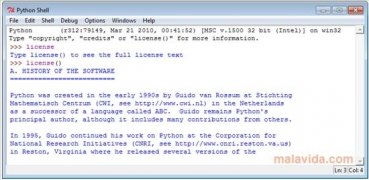One of the most practical programing languages
Python is possibly one of the most practical programming languages that exist. The clearness of its code and how easy it is to work with modules and reuse code have made Pythong an enviable language. It's very easy to learn with Python, thanks to the large amount of modules that the program itself includes by default and that are examples that are very easy to understand.
Ideal for both beginners and expert coders
Interpreted programing languages have the advantage of being able to be modified without having to perform new compilations or to link. This is something very useful in large projects or during the learning process.
This language was born at the end of the 80's and hasn't stopped gaining adepts due to how easy it is to use. In 1994 Guido van Rossum launched the first full version, that has evolved over the years until it has become compatible with almost all the operating systems and devices that exist, including Linux, Windows, Mac OS, Solaris, OS/2, Amiga, AROS, BeOS, z/OS, Palm OS, QNX, VMS, Psion, Acorn RISC OS, VxWorks, PlayStation,...
User-friendly and easy to learn.
Python has several standards that set the path for its evolution, some that are worth highlighting are “Simple is better than complex” or “Practicallity beats purity” under which the main decisions are taken, so as to maintain a set of values and the language's core philosophy.
 Antony Peel
Antony Peel
A Telecommunications Engineer, chance led me to the translation industry, where after a few years, I discovered another side of the world of technology while translating what others were writing about mobile applications and software. That...




